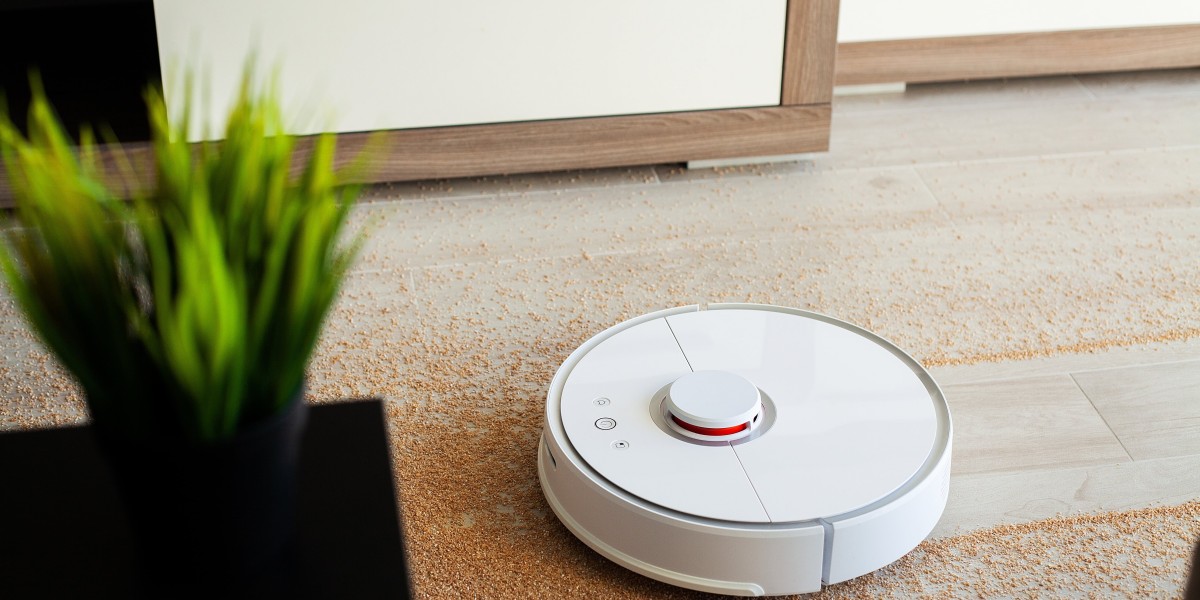The top robot vacuums have an efficient engine and a durable set of bristles or rollers. They also come with large dustbins and a long battery life.
 Some models use smart mapping to map homes, and they can stop, recharge and then clean up right where they left off. They can set up no-go zones and also recognize different surfaces.
Some models use smart mapping to map homes, and they can stop, recharge and then clean up right where they left off. They can set up no-go zones and also recognize different surfaces.Object Avoidance
Object detection is a crucial feature of robot vacuums, because it allows them to avoid running into small items like cords, toys, socks or shoes that are not on the floor, but rather on furniture. These systems employ an integrated camera to identify objects in an AI database, and then instruct the vacuum to stay clear of them. The Eufy S1 Pro uses a combination of sensors, including 3D Time of Flight, which emits light pulses into the room to determine distance and depth of objects, and 3D Structured Light, which beams a pattern of light onto the room and analyzes the distortion of light to build a map to avoid obstacles.
Artificial intelligence and visual interpretation are a more recent innovation in robot obstacle avoidance. They allow robots to better comprehend and identify what they encounter. This software uses one or two cameras to observe the world around them and then analyzes it in real-time. This software is used by the ECOVACS DEEBOT to detect up 30 different objects, including shoes and cables.
Some models use LiDAR to navigate. This technology emits laser beams and records the time it takes them to bounce back from the surrounding surfaces to create a live, 3-D map of the surroundings. This is useful for detecting walls, furniture and even stairs. However, it might not work in dim lighting or when working with transparent or reflective objects.
Regardless of which sensor or cameras are being used regardless of the camera or sensor used, a long-lasting battery is crucial to ensure that your robot can complete an entire home without needing to return to its dock to recharge. Find an option that runs for a minimum of 80 minutes or more, depending on the dimensions of your living space.
Bases that self-empty
Certain robot vacuum cleaners come with self-emptying bases. This could reduce the frequency at which you must empty your bin. They're considered a premium feature, and usually add to the price of a robot.
The most effective robots have bases that can hold bins, or a removable dustbin. It is possible to open it and empty it once full. This can help you save time by reducing the amount of time spent worrying about the time to empty a bin.
All of the robots we tested have self-emptying bases. The only exception is the Roomba I3+. This is a shame because the robot performs extremely well. It got the highest mapping performance of all the robots that we tested, and it has superb navigation abilities. It has a great mowing ability and a docking system that can empty the water tank automatically when needed.
It's not equipped with iRobot's innovative obstacle avoidance technology or digital keep-out zones, though it is hung up on rugs and cables and is unable to see shoes and socks that aren't in order. It's a great option for a smaller home that is well-maintained.
Its other strong points include its navigation technology, which includes bump sensors and drop sensors, as well as its ability to map the entire house with cameras and a laser. It is easy to use, comes with a variety of options and settings, and performs well when mowing or vacuuming. Another perk is its smart-home connectivity, which enables it to work with voice commands using Amazon Alexa and Google Assistant. This makes it easier to use if you have multiple tablets or smartphones and don't want to grab a remote.
App Controls
Some robots are Wi-Fi enabled, allowing you to control them from your tablet or smartphone. This is particularly useful in homes with multiple floors, where you might have to navigate your way through a staircase before the robot is able to get to the bottom of it. This removes the need for an extra long cord, allowing you to move furniture without worrying about the robot getting tangled in it or running out of power when cleaning.
The app functions as a central control point for monitoring and scheduling tasks. The app allows you to alter the cleaning mode, power and the water level of your robotic cleaner. This feature is especially useful for homes with different flooring types, such as tile and carpet. You can assign the robot the appropriate power and cleaning mode for every area.
Some models come with a built-in camera that sends a live feed directly to the application. These models are perfect for pet owners as well as those with children who need to monitor the robot as it functions. Other smart robots come with sensors that detect when they've reached the edge of a room. They then return to their base to dock. This prevents them from taking over an area and makes sure they've cleaned all surfaces within your home.
Certain models can empty the dustbin on their own and wash their mop heads and blow dry them between cleaning sessions. This reduces the need for manual maintenance and helps keep the cleaner performing well for a longer period of time. You can also pick one that has a longer battery life, which will help you avoid the hassles of mid-cleaning recharge.
Sensors
Many robot vacuums utilize sensors to navigate around your home and work their magic on hard floors such as laminate, wood, and tile as well as carpets with low pile and area rugs. They're not a replacement for an actual canister or upright vacuum cleaner, but they offer excellent suction on dirt and dust. They are a fantastic way to keep your floor clean between deep cleanings using an upright machine.
Sensors allow the robot to navigate around your home, detecting obstacles, and avoiding falling on stairs. You can also set up virtual and physical "no go" zones using boundary strips or virtual wall (like the ones used by Eufy) to prevent the robot entering specific areas of your home. Certain robots also have cliff sensors that alert you when the robot is getting close to crashing into an edge.
The type of navigation system the robot utilizes will depend on your budget and the layout of your home. The most advanced robotic Vacuum Cleaner Commercial vacuums make use of LiDAR sensors to scan and map rooms, ensuring precise and efficient navigation. These systems are costly, but provide the most effective results. Cheaper models with basic bump navigation systems aren't as precise and can miss spots. They're good for avoiding major obstacles, but they can still be unable to detect dirt in crevices or around baseboards.
Pick a model that has an enormous dust bin and long battery life. There are models that recharge and dock, then resume where they stopped. This can save time. In addition to navigation and cleaning, you can get the most out of your robot vacuum by preparing for each cleaning session. Check that all power cords, toys, and other debris is tucked out of the robot’s path and empty the trash bin after each cleaning. Cleanse the charging port and sensors to ensure that your robot is healthy.
Navigation
The most effective robot vacuums can create a digital map of your home using mapping technology during the initial cleaning session. It allows them to recognize the different textures of hard or carpeted floors and ensures that all areas are clean. It also prevents your robots from having to clean the same areas again to increase efficiency and reduce the amount of battery used. Many top models come with the option to save a map of your house to be used in the future which is ideal for larger homes.
Most robotic vacs have some kind of obstacle avoidance, which keeps them from crashing into cords, shoes, or socks. These sensors are not always able to detect smaller items. A few years ago manufacturers began adding more sensors to their robots, allowing them to identify and avoid household items that standard sensor systems couldn't. These include wall and cliff sensors, which function by bouncing infrared light beams off of surfaces to calculate distances.
Certain sensors are built directly into the robot base, while others need to be purchased separately. In general, these sensors assist the robot to navigate safely and prevent falling down steps, and stay clear of clutter. Certain models also have anti-drop sensors, which automatically stop the robot from hitting furniture or walls.
 LiDAR mapping, the most advanced navigation system available is a feature you should consider when buying a robot vacuum. This type of system uses a spinning laser sensor mounted on the top of the robot to map your home. It can map your home's interior by bounces of infrared beams off your furniture and walls. This information can help it plan efficient paths and clean your entire home.
LiDAR mapping, the most advanced navigation system available is a feature you should consider when buying a robot vacuum. This type of system uses a spinning laser sensor mounted on the top of the robot to map your home. It can map your home's interior by bounces of infrared beams off your furniture and walls. This information can help it plan efficient paths and clean your entire home.







